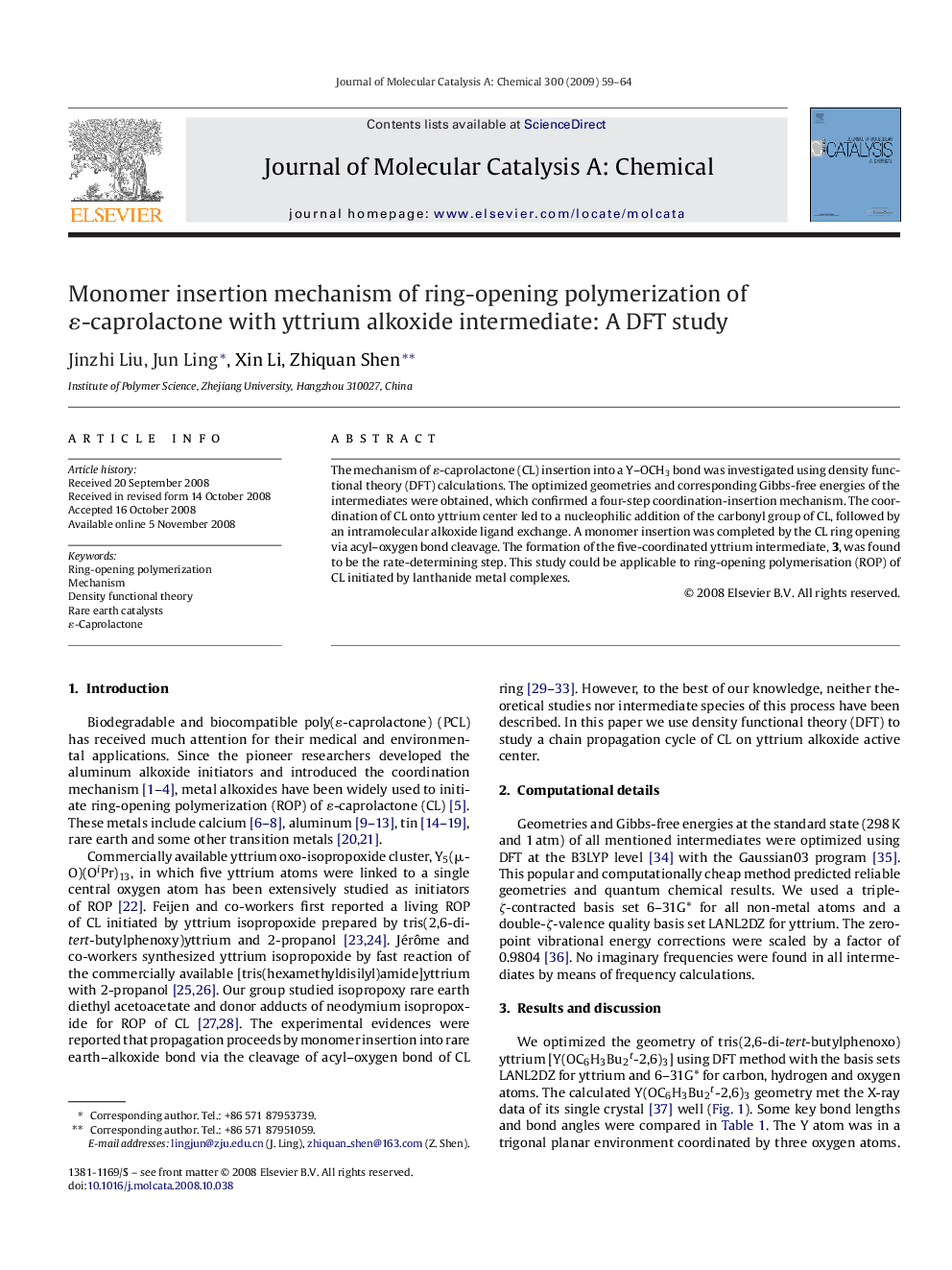| Article ID | Journal | Published Year | Pages | File Type |
|---|---|---|---|---|
| 67211 | Journal of Molecular Catalysis A: Chemical | 2009 | 6 Pages |
The mechanism of ɛ-caprolactone (CL) insertion into a Y–OCH3 bond was investigated using density functional theory (DFT) calculations. The optimized geometries and corresponding Gibbs-free energies of the intermediates were obtained, which confirmed a four-step coordination-insertion mechanism. The coordination of CL onto yttrium center led to a nucleophilic addition of the carbonyl group of CL, followed by an intramolecular alkoxide ligand exchange. A monomer insertion was completed by the CL ring opening via acyl–oxygen bond cleavage. The formation of the five-coordinated yttrium intermediate, 3, was found to be the rate-determining step. This study could be applicable to ring-opening polymerisation (ROP) of CL initiated by lanthanide metal complexes.
Graphical abstractA four-step coordination-insertion mechanism of ɛ-caprolactone (CL) insertion into a Y–OCH3 bond was investigated. The coordination of CL onto yttrium center led to a nucleophilic addition, followed by an intramolecular alkoxide ligand exchange. A monomer insertion was completed by the CL ring opening via acyl–oxygen bond cleavage. The formation of the five-coordinated yttrium intermediate was the rate-determining step. Figure optionsDownload full-size imageDownload as PowerPoint slide
